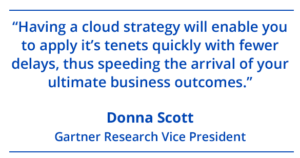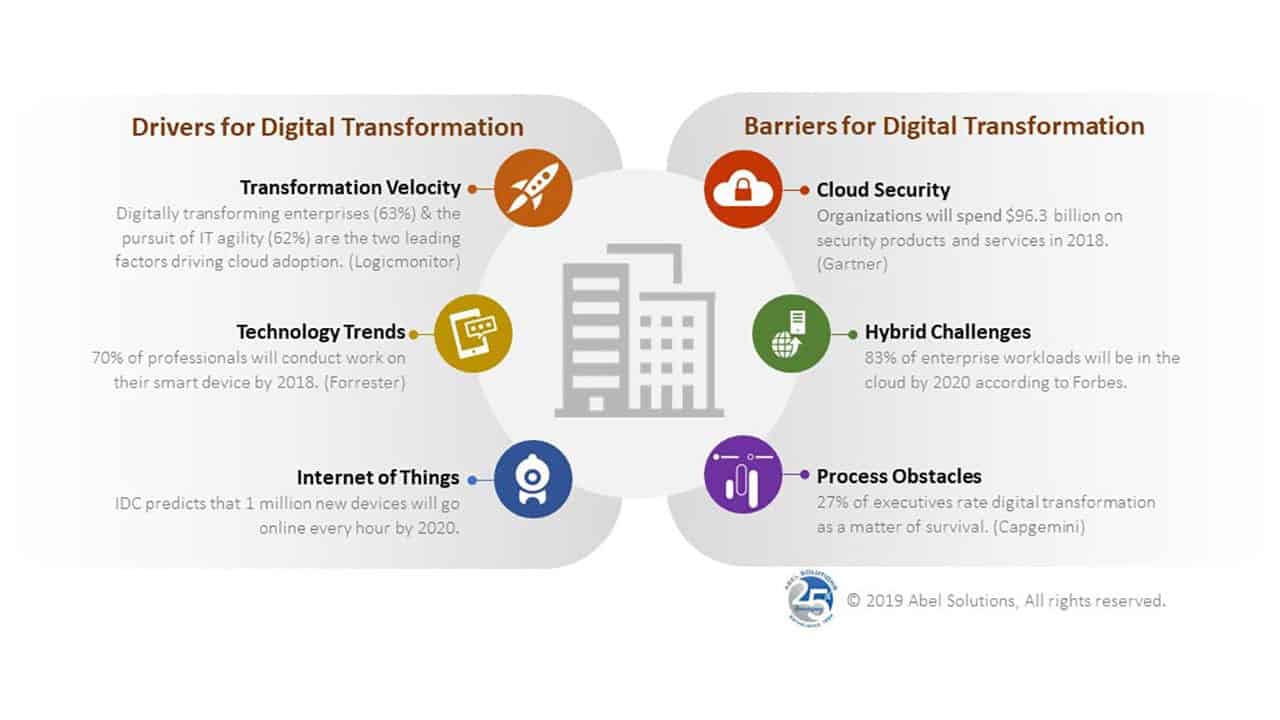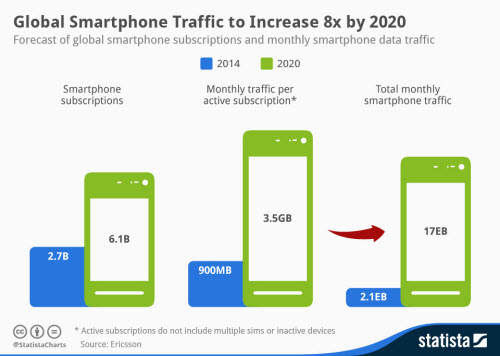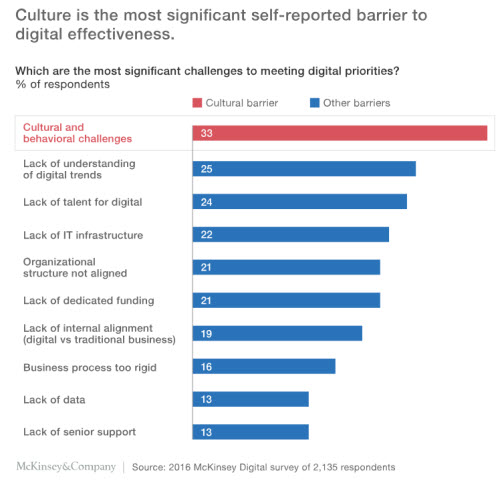[vc_row][vc_column][vc_column_text]
What is Digital Transformation?
Digital transformation is one the “catch phrases” tossed about when discussing Office 365. What exactly does digital transformation entail? Specifically, it is the reimagining of how technology works to empower people with data and processes that creates value and maintains a competitive advantage in the digital-first world.
Within three years, more than 30% of the world’s 100 largest vendors are expected to shift software investments from a cloud-first strategy to a cloud only strategy, according to Gartner. So how do you use cloud investments to drive digital transformation within your organization, and if you are primarily a Microsoft-driven company, how do you leverage Office 365?
Drivers for Digital Transformation
This focus on digital transformation is driven through innovation of increased market velocity, technology trends, and the prevalence of data being generated from the explosion of the Internet of Things (IoT).
Transformation Velocity
The use of the cloud has increased velocity (i.e., the speed at which technology is deployed) and transformed technology. Successful ideas are scaled and are paid for as they are used. This enables better integrated systems that provide a competitive advantage through allowing employees to be more responsive and better serve customers. Gartner anticipates by 2021 more than 70 percent of businesses will be substantially provisioned with cloud office capabilities.
Technology Trends
Technology trends are another driver of digital transformation. As consumers become savvier with mobile devices, apps and services, as well as the seamless integration that accompanies many of these tools, they expect the same experience from the companies with whom they do business.
Internet of Things
Finally, transformation is data driven with more than 26.6 billion “things” from the Internet of Things (IoT) connected worldwide in 2019 according to Statista. The data collected by these new devices and the information to make more informed and faster decisions is driving digital transformation. The cloud ensures data can be available anywhere, creating one source of truth and accelerate the ability to collaborate.
Barriers to Digital Transformation
Barriers do remain despite the upsides of cloud-driven digital transformation. Security, hybrid challenges and process remain obstacles for organizations and businesses to realize cloud based digital transformation.
Cloud security
There remains a wariness regarding the reliability and security of the cloud. This hesitation continues to prevent some companies from embracing new technologies. The fact is that the cloud provides greater defenses against cyberattacks than any small-to-medium sized business could manage on its own. Additionally, legacy systems that are no longer supported or regularly patched (e.g., earlier, out-of-support versions of on-premises SharePoint) pose massive security and data management risks.
Hybrid challenges
Many companies continue to rely on legacy systems. Often, budget constraints make technology upgrades difficult or interoperability between systems is challenging. Cloud offerings are designed to support businesses that use an “all-in” approach, which is not the realistic for many organizations.
Process obstacles
Finally, the process of the transformation itself may be the barrier to digital transformation. Any technology change can end up becoming overwhelming and is hard to know where to begin, who should be involved, and how to break it down into manageable steps. According to a McKinsey’s recent survey of global executives, 33% responded that “cultural and behavioral challenges” are the single largest obstacle barrier to digital effectiveness. There are now more resources available to organizations that struggling with how to best approach digital transformation to enhance their business.
Cloud Strategy
How does an organization utilize the drivers and overcome the barriers to digital transformation? The first step is to formulate a strategy, including a realistic timeline. Office 365 has the power to be the catalyzing force in your digital transformation journey; build on your successful deployment to give you the confidence to take on bigger transitions, like deploying your internal applications in the cloud.
There is no time to hesitate. Leverage the expertise of Abel Solutions to acquire the knowledge you need to understand and assist in the formulation and execution of your strategy and how it will affect your business and your customers. Inspire others to move in the right direction.
This Abel Insight written by Abel Solutions’ Chief Technologist, Jason Bell[/vc_column_text][/vc_column][/vc_row]









